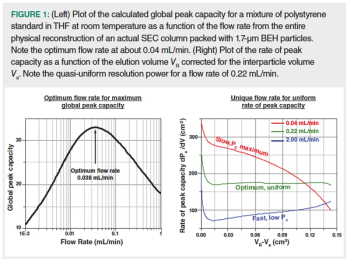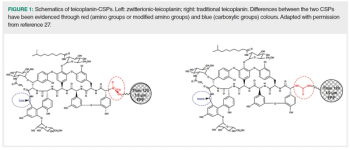
Special Issues
A series of theoretical, visualization, and simulation tools that are used to improve the structure and chemistry of the next generation of liquid chromatography (LC) columns is briefly reviewed.

Special Issues
A series of theoretical, visualization, and simulation tools that are used to improve the structure and chemistry of the next generation of liquid chromatography (LC) columns is briefly reviewed.

Special Issues
On-line comprehensive two-dimensional liquid chromatography (on-line LC×LC) provides much higher separation power (higher peak capacity) than one-dimensional liquid chromatography (1D-LC). However, it is also often thought that a larger peak capacity should be obtained at the expense of a higher dilution (lower peak intensity). From a theoretical approach, it is demonstrated that both demands can go hand-in-hand in on-line reversed-phase LC×reversed-phase LC (higher peak capacity and higher peak intensity). Examples involving “sub-hour” separations of a tryptic digest show how this approach can be applied in practice.

Special Issues
This article reports on a recently developed zwitterionic-teicoplanin chiral stationary phase (CSP). As a result of the innovative chemistry used to immobilize the chiral selector, the CSP is characterized at neutral pH by the simultaneous presence of both a negative (carboxylate) and a positive (quaternary ammonium) charge. This feature has proved to be pivotal in efficiently and productively resolving very challenging problems. It is worth mentioning the simultaneous separation of chiral active pharmaceutical ingredients (APIs) from their counterions and the separation of neutral-nonpolar, neutral-polar, acidic, and basic N-Fmoc chiral amino-acids. Examples of highly-efficient ultrafast chiral separations achieved on this CSP, as a result of use of effective superficially- and porous-particles, are provided.